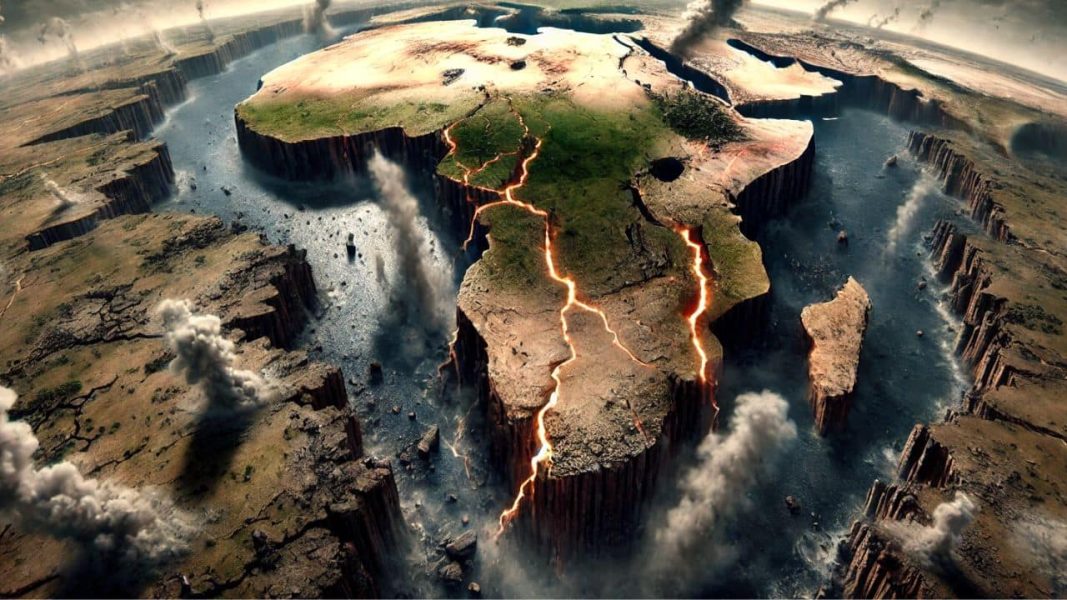A Western volcano could erupt soon – Coeur d’Alene Press

Randy Mann.
JAKE PARRISH/Press
When most of us think about active volcanoes in the U.S., Mount St. Helens, Mt. Rainier and a few others will first come to mind. However, one of the most active volcanoes in the region is about a mile underwater and approximately 300 miles off the U.S. western coastline. The Axial Seamount volcano is becoming more active, and it has erupted three times since 1998. Based on recent activity, scientists believe another eruption is very likely sometime this year. Their forecast is based upon the increase in the number of small earthquakes near the volcano.This type of volcano is not a threat to the public as it’s very deep underwater and not the explosive type. However, the Tonga eruption in the South Pacific in January 2022 was a large eruption that generated a tsunami and a sonic boom that circled the planet. The Tonga explosion also sent large amounts of water and tiny rock particles into the atmosphere. Since the volcano was located in the Southern Hemisphere, scientists believe that the eruption slightly cooled that part of the world for about one to two years.Scientists are working to better understand and predict volcanic eruptions. Currently, it’s estimated that there are over 1,500 active volcanoes on Earth. In the U.S., there are about 170 active volcanoes. Most of them are in Alaska where eruptions often occur every year. As of late last week, according to VolcanoDiscover.com, there are 44 erupting volcanoes, and most of them are located around Indonesia.One of the largest eruptions for 2020 happened at the Taal Volcano on Jan. 12 located on Luzon, one of the islands in the Philippines. The last time this volcano erupted was in 1977. The 2020 eruption disrupted flights and work schedules, produced volcanic lightning and sent a column of smoke and ash over 9 miles into the air. Ashfalls were seen as far away as Manila.Hawaii’s Kilauea volcano also continues to erupt. Scientists say that last week was the eighth eruptive episode as the event sent lava over 200 feet into the air. Although the Hawaiian volcano is not explosive like the ones in Indonesia or in the western U.S., it does produce high levels of volcanic gas and other volcanic fragments that can fall to the ground. It can also generate a hazardous air pollutant, a type of smog called “vog” that can lead to breathing problems and other health issues.There is another volcano that volcanologists are watching very closely. The volcano is located in Alaska about 75 miles west of Anchorage and could be building toward another explosion. Mount Spurr is the volcano that has previously erupted in 1953 and 1992 that managed to darken the skies around Anchorage due to the emission of volcanic ash.One of the classic signs of an impending eruption is the sudden increase of earthquakes within the region. Within the past week, it has been reported that over 200 earthquakes occurred at Mount Spurr in Alaska. However, back in 1992, the earthquakes were practically continuous before the eruption.On the Greek island of Santorini, a place known for tourism, there has been a recent swarm of earthquakes that has led to a state of emergency. Thousands of residents evacuated to nearby Athens, Greece, to be safely away from potential danger. The rare swarm of strong earthquakes has raised concerns about another underwater volcano. Over 200 underwater earthquakes have been reported near the Kolumbo volcano, and many scientists are wondering if the sudden increase in seismic activity may lead to a new eruption. However, many of these scientists say that a new eruption is not likely, and the earthquakes may be due to a fault system in the region.In terms of our local weather, some measurable snowfall finally arrived across the Inland Northwest. As of the weekend, nearly 19 inches of snow has fallen during the 2024-25 season at Cliff’s station in Coeur d’Alene. At the Spokane International Airport, a little more than 20 inches of snow has been reported for the season.In the higher mountains, snowfall totals for the season have been good. At the summit of Silver Mountain, there has been close to 180 inches of snow for the season with depths over 90 inches at the summit. At Lookout Pass, approximately 280 inches of snow have fallen for the season with snow depths around 65 inches at the summit. Schweitzer’s snowfall total for the season is close to 200 inches as of the weekend.Much of the Inland Northwest should have a break from the snowfall during the early-to-mid portion of the week. There is another system that will bring the chance of more snow late in the week. The long-range computer models are pointing to a series of storms from the Pacific that will likely be cold enough to produce more snow in the lower elevations next week and continue through the end of the month, or perhaps into early March. Stay tuned.• • • Contact Randy Mann at randy@longrangeweather.com. twitterfacebookLinkedInEmail
copyright © 2025
Terms of Use |
Privacy Policy
215 N. 2nd St.
Coeur d’Alene, ID 83814
208-664-8176
Source: https://cdapress.com/news/2025/feb/10/a-western-volcano-could-erupt-soon/






